Kuala Lumpur Travel - Malaysia, Southeast Asia
Kuala Lumpur, the vibrant capital of Malaysia, is situated in the west-central region of Peninsular Malaysia, about 40 kilometers east of the Strait of Malacca. Covering 243 square kilometers (94 square miles), the city boasts a diverse cultural landscape, with significant populations of Malays, Chinese, and Indians, each contributing to its rich traditions, languages, and culinary scene. As a major economic and financial powerhouse in Southeast Asia, Kuala Lumpur ranks as ASEAN's fifth-largest economy. The city is renowned for its iconic landmarks, including the Petronas Twin Towers, once the tallest buildings in the world, and the Menara Kuala Lumpur (KL Tower), offering breathtaking panoramic views of the bustling metropolis.
Population: Estimate 2.1 million (as of 2024)
Economy: Kuala Lumpur stands as the economic heart of Malaysia and a dynamic hub for travelers interested in its thriving economy. As part of the fifth-largest economy in ASEAN, the city has seen rapid growth, driven by strong domestic demand and a resurgence in tourism. Key industries such as finance, real estate, and tourism dominate, with the service sector accounting for 83% of employment.
Landmarks: Petronas Twin Towers, Kuala Lumpur Tower (Menara KL), Batu Caves, Sultan Abdul Samad Building, Merdeka Square, National Mosque (Masjid Negara), Kuala Lumpur Bird Park, KLCC Park
Malaysia
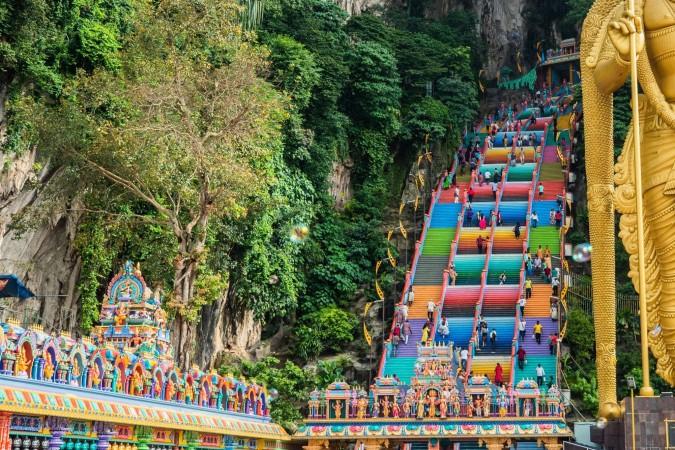
Overview of Kuala Lumpur
History & Cultural Influence
Kuala Lumpur's beginnings trace back to 87 Chinese tin miners, sent by Raja Abdullah, a local Malay chief, to exploit the area's rich tin deposits. This led to rapid growth, and by the late 19th century, Kuala Lumpur had become a thriving hub for tin production. In 1887, it was named the capital of Selangor, and by 1896, it became the capital of the Federated Malay States, attracting a diverse population of Malays, Chinese, and Indians, laying the foundation for its multicultural identity.
During British colonial rule (1913–1957), Kuala Lumpur experienced significant urban development, with the construction of roads, railways, and iconic colonial architecture that still defines parts of the city today. Post-independence, Kuala Lumpur continued to flourish, becoming the capital of Malaysia in 1963, and evolving into a major economic and cultural hub in Southeast Asia.
Kuala Lumpur's multicultural society is a key part of its vibrant identity, with its diverse ethnic communities shaping the city’s culinary, artistic, and social landscape. Malays, Chinese, and Indians have all contributed to a rich blend of traditions and festivals celebrated throughout the year, creating a dynamic cultural atmosphere.
Interaction with The Locals
Kuala Lumpur is renowned for its hospitality, with locals displaying a friendly and open attitude towards tourists. With a population primarily practicing Islam. Locals are often eager to share their traditions and culinary delights, making cultural exchanges a highlight of the visit. Engaging with them about local customs and festivals can enhance your experience. While Malay is the national language, English is widely spoken, especially in urban areas, ensuring easy communication for tourists. Kuala Lumpur's multicultural fabric fosters an environment of tolerance and respect. Visitors are encouraged to be mindful of local customs, especially when visiting religious sites or attending festivals.
The city hosts vibrant cultural festivals such as Hari Raya, Chinese New Year, and Deepavali. Participating in these events provides a rich insight into the community’s spirit and traditions.

Kuala Lumpur skyline - © Michael Breitung
Top attractions in Kuala Lumpur
Petronas Twin Towers
Location: Kuala Lumpur City Centre, Kuala Lumpur
Standing tall at 451.9 meters (1,483 feet), the Petronas Twin Towers are an absolute must-see when you’re in Kuala Lumpur. You can visit the Skybridge on the 41st floor for an exhilarating walk between the two towers or head up to the 86th-floor Observation Deck for stunning panoramic views of the city. Once you're done soaking in the sights, take a relaxing stroll around KLCC Park or explore Suria KLCC, the upscale shopping mall right at the base.
Batu Caves
Location: Gombak, Batu Caves, Selangor
If you're looking for a bit of adventure and culture, head over to Batu Caves. You’ll need to climb 272 colorful steps to reach the Temple Cave, home to beautiful Hindu shrines and a spiritual vibe that’s hard to beat. Don’t forget to check out the towering 42.7-meter (140 ft) statue of Lord Murugan, which stands guard at the entrance. Batu Caves is especially lively during the annual Thaipusam festival, but it's a fascinating place to visit any time of year.
Kuala Lumpur Tower (KL Tower)
Location: 2 Jalan Punchak, Off Jalan P. Ramlee, Kuala Lumpur
For the best views in town, KL Tower is the place to be. At 421 meters (1,381 feet) high, this tower gives you unbeatable 360-degree views of the city. Whether you choose to just take in the sights from the observation deck or dine at the revolving restaurant, Atmosphere 360, you'll be amazed by the sweeping cityscape. Be sure to visit at night too – the city lights are simply magical from up there!
Merdeka Square (Dataran Merdeka)
Location: Jalan Raja, Kuala Lumpur
History buffs will love Merdeka Square, the very spot where Malaysia proclaimed independence in 1957. The square is hard to miss with its massive 95-meter (312 ft) flagpole, one of the tallest in the world! Take your time strolling around and admire the beautiful Sultan Abdul Samad Building and other colonial-era architecture. It’s a perfect spot to reflect on the country’s journey to freedom.
Central Market (Pasar Seni)
Location: Jalan Hang Kasturi, 50050 Kuala Lumpur
Ready for a shopping spree? Central Market is the perfect place to pick up some local handicrafts, souvenirs, and artwork. Housed in a charming building that mixes Moorish and Victorian design, this market has something for everyone. Don’t miss the chance to catch one of the regular cultural performances or art exhibitions—they’re a great way to immerse yourself in the local vibe.
Thean Hou Temple
Location: 65, Persiaran Endah, Taman Persiaran Desa, Kuala Lumpur
Take a step into serenity at Thean Hou Temple, one of the largest Chinese temples in Southeast Asia. Sitting high on a hill, this temple offers incredible views of Kuala Lumpur while blending Buddhist, Taoist, and Confucian elements in its stunning design. Dedicated to Mazu, the sea goddess, Thean Hou is a peaceful retreat where you can enjoy the intricate architecture and soak in the calming atmosphere.
Islamic Arts Museum Malaysia
Location: Jalan Lembah, Tasik Perdana, Kuala Lumpur
If you're a lover of art and history, then the Islamic Arts Museum Malaysia is a must-visit. Home to one of the most comprehensive collections of Islamic art in Southeast Asia, this museum has everything from gorgeous calligraphy to intricately designed ceramics and textiles. You’ll be transported through time and across cultures as you explore the museum’s beautiful galleries—it's the perfect way to dive into Malaysia’s rich Islamic heritage.
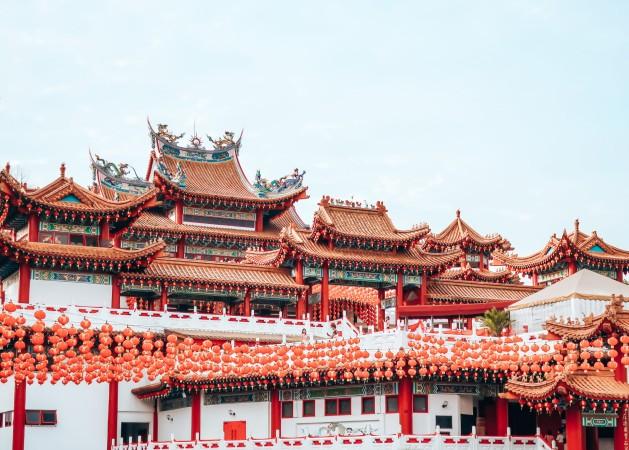
Thean Hou Temple - © gather
Must-Try Dishes in Kuala Lumpur
When visiting Kuala Lumpur, you must try Nasi Lemak, Malaysia’s national dish, featuring fragrant coconut rice served with spicy sambal, fried anchovies, and peanuts—a true reflection of the city’s culinary diversity. Don’t miss Satay, skewers of marinated grilled meat served with a rich peanut sauce, a favorite street food that captures the heart of Malaysia's vibrant food scene.
Nasi Lemak
Malaysia’s national dish, Nasi Lemak, features coconut milk-steamed rice served with fried anchovies, peanuts, sliced cucumbers, a hard-boiled egg, and sambal made from fermented shrimp and chilies. It’s a delightful blend of flavors, offering a glimpse into the country’s rich culinary diversity, available everywhere from street vendors to upscale restaurants in Kuala Lumpur.
Satay
Grilled skewers of marinated meat—chicken, beef, or lamb—make Satay one of Kuala Lumpur's favorite street foods. Paired with a rich peanut sauce, cucumber slices, and rice cakes, it's a simple yet flavorful meal, capturing the essence of Malaysia’s street food culture.
Char Kway Teow
A staple in many Kuala Lumpur eateries, Char Kway Teow is stir-fried flat rice noodles tossed with prawns, Chinese sausage, bean sprouts, and chives in a blend of soy sauce and spices. It reflects the Chinese influence on Malaysian cuisine, with its rich, savory flavors making it a local favorite.
Laksa
A spicy noodle soup, Laksa bursts with bold flavors from a curry coconut milk or tamarind-based broth. The dish combines rice or egg noodles with chicken, prawns, or fish, offering a hearty and flavorful experience that embodies Kuala Lumpur’s multicultural culinary landscape.
Roti Canai
This flaky, crispy flatbread, typically served with dhal (lentil curry), chicken, or mutton curry, is a go-to breakfast staple. With its Indian roots, Roti Canai is loved for its texture and versatility, easily found at local food stalls across Kuala Lumpur.
Cendol
A refreshing dessert made of shaved ice, green rice flour jelly noodles, coconut milk, palm sugar syrup, and red beans. Cendol provides a sweet and cooling escape from Kuala Lumpur’s tropical heat, and is a must-try for those exploring the city's dessert scene.

Nasi Lemak - © Asian Inspirations
Festivals & Local Celebrations
Chinese New Year
Time of Year: Late January or early February, depending on the lunar calendar
During Chinese New Year, Kuala Lumpur comes alive with vibrant decorations, including red lanterns, mandarin oranges, and plum blossoms symbolizing good luck. Visitors can enjoy the captivating dragon and lion dances, fireworks displays, and cultural performances while families gather to share traditional dishes like dumplings and bak kwa, making this festival a joyous occasion filled with color and tradition.
Thaipusam
Time of Year: Late January
Thaipusam is an extraordinary Hindu festival where tens of thousands of devotees and spectators flock to the Batu Caves. The highlight is a dramatic procession, with many participants practicing self-mortification by piercing their bodies with hooks and skewers. The atmosphere is a riot of vibrant colors, lively music, and deep spiritual significance, making it a must-see cultural event.
Deepavali (Diwali)
Time of Year: Mid-October to mid-November
Deepavali, or the Festival of Lights, is a time when homes are cleaned, decorated with intricate rangoli designs, and illuminated with oil lamps to symbolize the victory of light over darkness. Families gather to enjoy traditional Indian delicacies like rice pudding and murukku, while fireworks light up the night, making it a warm and festive time for visitors to experience.
Hari Raya Aidilfitri (Eid al-Fitr)
Time of Year: Late May or early June, depending on the sighting of the moon
Celebrating the end of Ramadan, Hari Raya Aidilfitri is marked by family reunions, acts of charity, and homes adorned with colorful lights. Visitors can experience traditional Malay dishes like rendang and ketupat, while the festive atmosphere brings together families and communities in celebration.
Merdeka Celebrations
Time of Year: August 31st
On Merdeka Day, Malaysia celebrates its independence with grand parades, cultural performances, and fireworks. The flag-raising ceremony at Merdeka Square is the centerpiece of the celebration, uniting Malaysians in a proud display of national pride and cultural diversity.
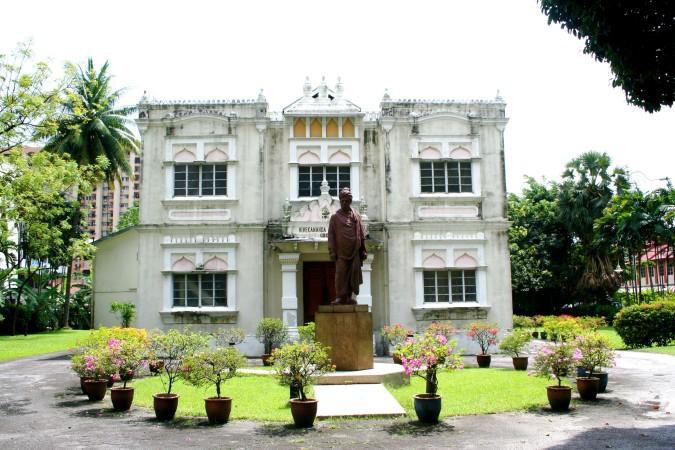
Colonial house in Kuala Lumpur - © Cioccolata Bella
Weather in Kuala Lumpur: Best Time to Visit
Kuala Lumpur has a tropical rainforest climate with high humidity and consistent warm temperatures year-round.
Average Temperatures
The city’s weather remains relatively stable, with daily highs ranging between 32°C to 35°C (90°F to 95°F) and lows around 23°C to 25°C (73°F to 77°F). March tends to be the warmest month, averaging 28°C (82°F), while January is slightly cooler at around 27°C (81°F).
Rainfall
Kuala Lumpur receives significant rainfall, with an annual average of about 2,600 mm (100 inches). The wettest months are October and November, with November seeing around 290 mm (11.4 inches) of rain. The city experiences two monsoon seasons: the Northeast Monsoon (November to March), which brings heavy rains, especially in November, and the Southwest Monsoon (May to September), with slightly drier conditions but still some rain.
Best Time to Travel
The ideal time to visit Kuala Lumpur is from June to August, during the drier season, perfect for exploring the city's outdoor attractions. Even during these months, brief rain showers can occur. You might also want to plan your trip around cultural festivals like Hari Raya Aidilfitri, Chinese New Year, or Deepavali, which offer a chance to experience the city’s rich traditions.
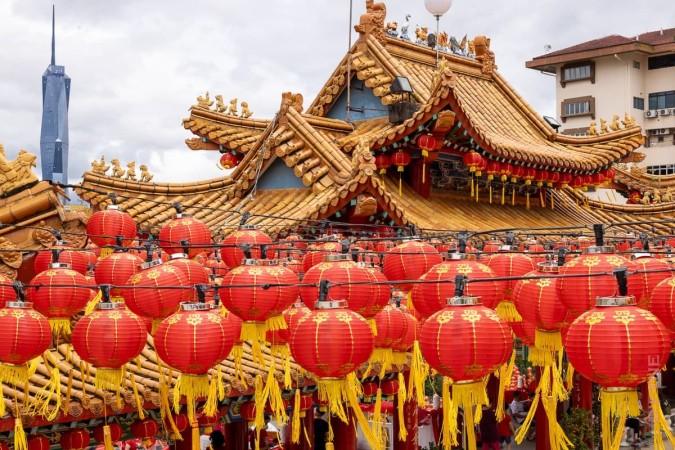
Kuala Lumpur cultural festivals - © gather
Culture Etiquette in Kuala Lumpur
Dress Code
In Malaysia, especially in rural areas or religious sites like mosques and temples, it's important to dress modestly. Women should cover their shoulders and knees, while men should avoid wearing shorts in these settings. This reflects respect for the country’s predominantly Muslim culture.
Greetings
When greeting, it's polite to wait for the other person to initiate a handshake. A traditional Malay greeting involves shaking with both hands, but avoid touching women unless they offer their hand first. To show sincerity and respect, you can place your right hand over your heart after a handshake.
Public Behavior
Public displays of affection, such as hugging or kissing, are generally discouraged, particularly in conservative areas. When addressing elders, use terms like "uncle" (pak cik) or "aunty" (mak cik) as a sign of respect, and avoid pointing with your finger—use your whole hand instead.
Dining Etiquette
Always use your right hand when eating or passing food, as the left hand is considered unclean. Additionally, remember to remove your shoes when entering someone’s home or religious site—this is a customary sign of respect in Malaysia.
Gift Giving
If invited to someone’s home, it’s thoughtful to bring a small gift, known as buah tangan, such as fruit, a souvenir, or a small token of appreciation. The gesture of giving is more meaningful than the gift itself.
Cultural Sensitivities
Avoid discussing sensitive topics like politics, religion, or ethnic relations, as these can be delicate issues. It’s best to observe and listen during conversations. Additionally, be aware of local superstitions, such as the number four being considered unlucky in Chinese culture, to avoid unintended faux pas.
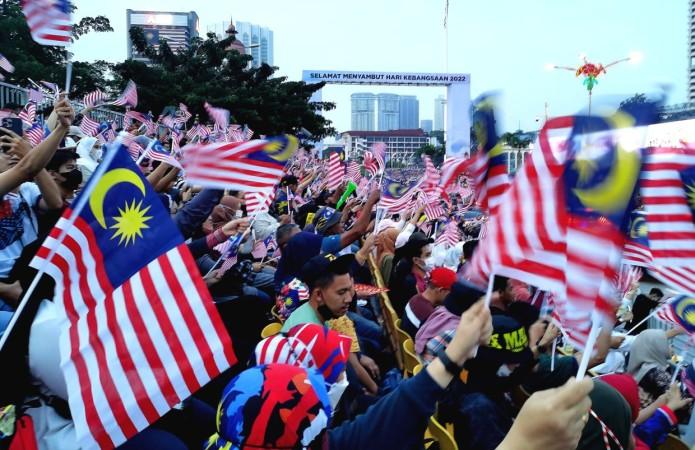
Merdeka Celebrations - © thestar
Essential Travel Information
Transportation
Getting to Kuala Lumpur
Kuala Lumpur International Airport (KUL): Located about 60 kilometers from the city center, KLIA is the primary gateway for travelers arriving in Kuala Lumpur. You have several options for airport transfers:
- Private Transfers: Pre-booked private cars or shuttles, offered by services like Transfeero and Mozio, provide a hassle-free option with fixed prices and meet-and-greet services. Rates typically start at around USD 25.95 for a ride to the city center.
- Taxis: Official airport taxis are available at designated counters. Fares are metered, and it’s best to use the official service to avoid overcharging.
- Shuttle Buses: Several shuttle buses operate between the airport and major locations in Kuala Lumpur, including transport hubs and hotels, providing a budget-friendly option.
Getting Around Kuala Lumpur
Public Transit: Kuala Lumpur boasts an efficient public transportation system:
- LRT (Light Rail Transit): Two key lines, Kelana Jaya and Ampang, connect major areas across the city.
- Monorail: Ideal for getting around the city center, the monorail gives easy access to shopping and entertainment hubs.
- MRT (Mass Rapid Transit): A great option for longer distances, the MRT connects the city with suburban areas.
- Buses: The city has an extensive bus network, including the free Go KL City Bus, which connects top tourist spots.
Taxis: Taxis are easy to find, but for convenience and transparency, using the Grab app is highly recommended. It offers upfront pricing, ensuring you won't be overcharged, and taxis can also be hailed on the street or at designated stands.
Ride-Sharing Services: Grab is the go-to ride-sharing service in Malaysia, offering an affordable and easy alternative to traditional taxis. You can book a ride through the app with options for various vehicle types and upfront pricing for peace of mind.
ATM and Banking Services
Kuala Lumpur’s well-established banking infrastructure makes it easy for travelers to access cash and other banking services throughout the city.
- ATMs: You’ll find ATMs in shopping malls, airports, and major tourist areas. Most accept international cards like Visa and MasterCard, making it easy to withdraw Malaysian Ringgit. Major banks include:
- Maybank: Malaysia's largest bank, with a wide network of ATMs across the city.
- HSBC: Great for international travelers, offering fee-free access for certain account holders.
- AmBank: Conveniently located in key areas like Kuala Lumpur Sentral.
- Banking Hours: Banks typically operate from 9:30 AM to 4:30 PM, Monday to Friday, with some open on Saturday mornings. Many ATMs are available 24/7 for cash withdrawals.
- Currency Exchange: You’ll find currency exchange services at banks, hotels, and exchange counters. To get the best rates, it’s recommended to use reputable places like banks or authorized money changers.
Accommodation Choices
Whether you’re looking for luxury, mid-range, or budget-friendly stays, Kuala Lumpur has plenty of options to suit every traveler.
Luxury Hotels
- Mandarin Oriental: Situated near the Petronas Twin Towers, this hotel offers lavish amenities and spectacular city views.
- Shangri-La Hotel: Known for its excellent service and central location, perfect for exploring the city's top attractions.
Mid-Range Hotels
- Hotel Stripes Kuala Lumpur: A modern, stylish hotel featuring a rooftop pool, located in the city center.
- The Kuala Lumpur Journal Hotel: A trendy boutique hotel in Bukit Bintang, close to great shopping and dining spots.
Budget Accommodations
- BackHome Kuala Lumpur: A popular hostel with a friendly vibe, great for backpackers seeking social spaces.
- Tune Hotel: An affordable option with basic amenities, conveniently located near public transport.
Serviced Apartments
- Fraser Place Kuala Lumpur: Ideal for longer stays, offering fully serviced apartments with the comforts of home and hotel-like services, perfect for families or business travelers.
Articles for you

Explore Yala National Park - Sri Lanka Travel, Asia
Tucked away in Sri Lanka’s southeastern corner, Yala National Park is where wild nature meets deep tradition. Known worldwide for its leopard population, the park is also home to elephants, sloth bears, crocodiles, and hundreds of bird species. Beyond wildlife, Yala opens doors to a cultural landscape dotted with ancient temples, Buddhist ruins, and coastal villages. For travelers seeking more than just a safari, Yala offers a chance to explore eco-tourism, local communities, and sacred heritage sites.
Population: The Yala National Park area doesn’t have a human population.
Economy: The economy around Yala National Park thrives on a blend of eco-tourism, agriculture, and local services. Safari tours, eco-lodges, and cultural experiences drive steady income for nearby towns like Tissamaharama and Kataragama, supporting thousands of families.
Landmarks: Famous for Block I of Yala and wildlife encounters, including elephants, sloth bears, crocodiles, and exotic bird species.

Explore Galle - Sri Lanka Travel, Asia
Nestled on Sri Lanka’s southern coastline, Galle is a vibrant city where history meets the sea. Its cobbled streets, colonial architecture, and serene beaches make it a must-visit destination for travelers seeking a blend of culture, adventure, and relaxation. A UNESCO World Heritage site, Galle captivates visitors with its Dutch Fort, bustling markets, and friendly locals. Whether you’re exploring the ramparts at sunset or savoring fresh seafood by the shore, Galle promises an unforgettable journey into Sri Lanka’s heritage.
Population: Approximately 113,000 in 2023.
Economy: Galle’s economy thrives on tourism, trade, and fisheries. The city’s historic fort, colonial architecture, and coastal charm draw thousands of international visitors each year, making tourism its main economic driver. Fishing remains vital for local livelihoods, supplying fresh seafood across the region.
Landmarks: Famous for the Galle Fort, Dutch Reformed Church & Maritime Museum, and Unawatuna Beach.

Explore Bentota - Sri Lanka Travel, Asia
Nestled along Sri Lanka’s southwestern coast, Bentota is a tropical paradise that blends golden beaches, vibrant culture, and thrilling adventures. Famous for its calm waters, luxury resorts, and scenic river estuary, Bentota has become a top destination for travelers seeking both relaxation and authentic experiences. From serene beach walks at sunrise to adrenaline-pumping water sports, this coastal town offers a perfect balance of leisure and exploration. With its proximity to Colombo and Galle, Bentota is easy to reach, making it an ideal stop for both short escapes and extended holidays.
Population: Approximately 37,000 in 2023.
Economy: Bentota’s economy thrives mainly on tourism, which drives local businesses such as hotels, restaurants, and wellness retreats. The town also benefits from fishing, coconut cultivation, and handicrafts like wood carving and batik textiles. Many residents rely on the growing demand for water sports and Ayurvedic treatments, making tourism the backbone of both income and employment in the area.
Landmarks: Famous for Bentota Beach, Bentota River Safari, and Kande Vihara Temple.

Explore Mirissa - Sri Lanka Travel, Asia
Mirissa is a charming coastal town on Sri Lanka’s southern shoreline. Known for its golden beaches, turquoise waters, and vibrant marine life, it has become a must-visit stop for travelers exploring the island. Many come for whale watching, surfing, and sunset views at Coconut Tree Hill, but Mirissa offers much more than postcard beauty. The fishing boats you see anchored by the bay carry generations of stories. Local traditions, delicious cuisine, and a laid-back rhythm of life shape every visitor’s experience.
Population: Approximately 4,700 in 2023.
Economy: Mirissa’s economy is largely shaped by its coastal location. Fishing has long been the backbone of local livelihoods, with generations relying on the Indian Ocean for income. In recent decades, tourism has become the main driver of growth, thanks to whale watching, surfing, and beachside hospitality.
Landmarks: Famous for Mirissa Beach, Coconut Tree Hill, and Parrot Rock Bridge.

Explore Nuwara Eliya - Sri Lanka Travel, Asia
Tucked away in the Central Highlands of Sri Lanka, Nuwara Eliya is often called “Little England”. With its rolling tea plantations, cool misty mornings, and colonial charm, this mountain town feels like a step into another world. Travelers come here to breathe fresh air, walk through flower gardens, sip the finest Ceylon Tea, and enjoy a pace of life far from the island’s busy cities. Whether you’re drawn by scenic landscapes, heritage architecture, or the warmth of its people, Nuwara Eliya is a destination that blends nature, culture, and history in perfect harmony.
Population: Approximately 781,000 in 2023.
Economy: Nuwara Eliya’s economy thrives mainly on tea production, as it sits in the heart of Sri Lanka’s central highlands, famous worldwide for Ceylon Tea. The city also benefits from a growing tourism industry, attracting visitors with its colonial charm, cool climate, and scenic landscapes.
Landmarks: Famous for Gregory Lake, Hakgala Botanical Garden, and Victoria Park.

Explore Sukau - Malaysia Travel, Asia
Nestled on the banks of the Kinabatangan River in Sabah, Malaysian Borneo, Sukau is a destination where wildlife, culture, and conservation come together. Known as one of Asia’s top spots for river safaris and eco-tourism, this quiet village offers a front-row seat to encounters with Bornean orangutans, pygmy elephants, proboscis monkeys, and exotic birdlife.
Population: Approximately 1,400 in 2019.
Economy: Sukau’s economy is shaped by its riverine location and natural resources. Traditionally, the Orang Sungai community relied on fishing, small-scale farming, and forest gathering for their livelihood. Today, the village has shifted toward eco-tourism, with river cruises, jungle trekking, and homestays providing income.
Landmarks: Famous for the Kinabatangan River cruises, Gomantong Caves, and Ox-bow lakes and wetlands.
